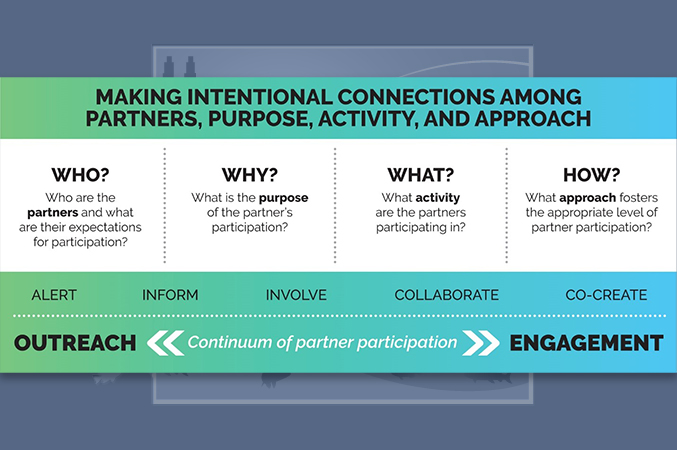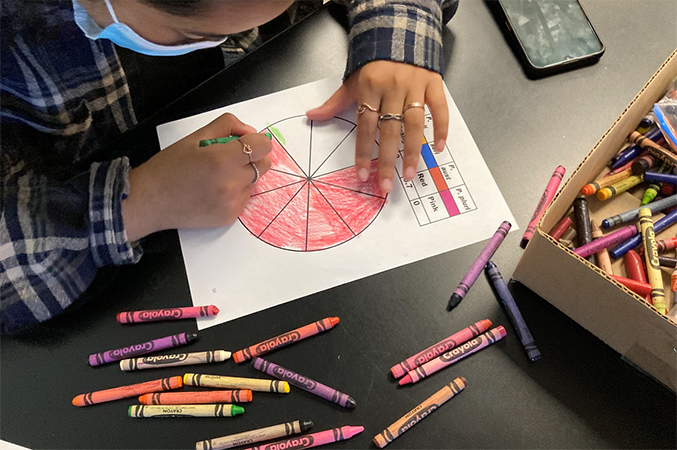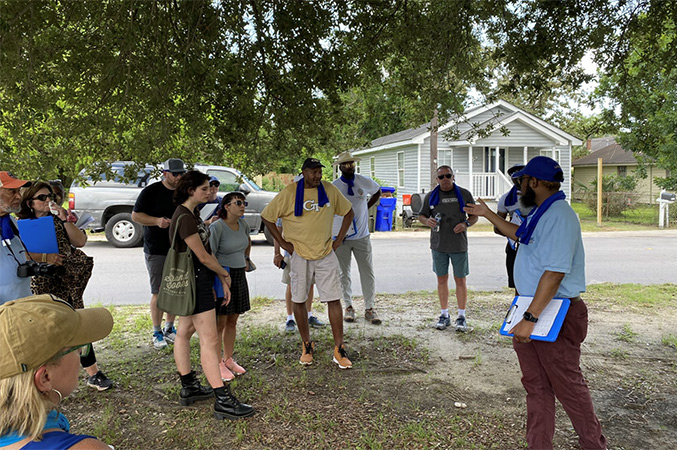Researchers from the Centers for Oceans and Human Health (COHH) created a strategic framework for community engagement in research on oceans and human health. Community engagement is a beneficial component of public health research that supports effective and efficient solutions to health problems, builds trust, and helps translate research results back to communities. Oceans and human health research can benefit from community engagement, and efforts are being made to incorporate it further. In an April 2022 paper , the authors describe the framework, explain why it was created, and emphasize the importance of bringing community engagement into this type of research.
Community Engagement in the Work of the Centers for Oceans and Human Health
The NIEHS- and National Science Foundation-funded COHH program includes four centers:
- Center for Oceans and Human Health and Climate Change Interactions, led by the University of South Carolina.
- Great Lakes Center for Fresh Waters and Human Health at Bowling Green State University.
- Greater Caribbean Center for Ciguatera Research at the Florida Gulf Coast University.
- Woods Hole Center for Oceans and Human Health at the Woods Hole Oceanographic Institution.
Presentations at a workshop on “Communicating Harmful Algal Blooms Science,” convened by Woods Hole Center for Oceans and Human Health CEC Director Mindy Richlen at the 2019 Symposium for Harmful Algal Blooms in the U.S. (Photos courtesy of Mindy Richlen)
These centers address an array of topics related to oceans and human health, including public health concerns related to oceans and other bodies of water. Areas of interest include harmful algal blooms and how exposure affects human health, the effects of climate change on aquatic pathogens, microplastics, and environmental justice efforts.
In 2019, NIEHS and the National Science Foundation directed each COHH to create a Community Engagement Core (CEC), like other NIEHS-funded center programs. At the 2019 COHH annual meeting, the CECs established a collaborative working group that developed a community engagement plan, which later became the Strategic Framework for Oceans and Human Health Community Outreach and Engagement.
“Research translation and community engagement are vital to NIEHS’ portfolio of research,” stated Anika Dzierlenga, Ph.D., NIEHS program director of the COHH. “This framework will support the COHH Community Engagement Core and others in determining effective engagement strategies.”

The Strategic Framework for Oceans and Human Health Community Outreach and Engagement, modified from the International Association for Public Participation’s spectrum of public participation. (Figure courtesy of Margaret Carson, Diane Doberneck, Zac Hart, Heath Kelsey, Jennifer Pierce, Dwayne Porter, Mindy Richlen, Louisa Schandera, and Heather Triezenberg)
Ocean and human health researchers who use the framework are encouraged to answer questions that will help them make intentional connections with community members. Answers to these questions will determine four important aspects of community engagement:
- Knowing who the partners will be.
- Identifying the purpose of partners’ participation.
- Designing the activity in which the partners will participate.
- Implementing the approach that will foster the level of participation appropriate for the partners.
The framework recognizes that there can be varying degrees of community engagement in any project. This continuum allows for designing activities along the spectrum of outreach and engagement efforts. The spectrum encompasses projects with minimal community participation in which researchers alert or inform community members of research activities or results, projects with more community involvement in which public concerns are considered, and projects in which the community is included as collaborators.
The community engagement team and researchers adapted the framework from an existing one by the International Association for Public Participation . Key changes include modifying the community engagement continuum, for example by reflecting the community-based participatory research principle of co-creation, which is when researchers and partners have equal say in developing and analyzing research, and centering community partners through the framework’s questions that determine partner involvement.
“Identifying partners is critical to our work,” said Mindy Richlen, Ph.D., director of the Woods Hole Center’s CEC. “Being specific about who is engaged and how helps to identify target audiences and partners, focus the research on what matters to the community, and achieve shared goals and outcomes.”
Using the Framework
The publication provides several case studies to illustrate how the framework ties into levels of engagement.
One case study describes how COHH researchers and partners developed educational materials for K-12 students related to oceans and human health. Partners engaged at the levels of “inform” and “involve.” For this project, a science educator helped develop the materials, and K-12 teachers and students participated in classroom testing to evaluate the materials. As a result, students learned about harmful algal blooms, which improved their ocean literacy. The activities specified tactile teaching aids to facilitate participation by students with visual impairments, including 3D printed models of several harmful algal bloom species, raised-line drawings and graphs for data interpretation, and braille captioning.

Using the materials developed by COHH researchers and partners, a K-12 student colors in the slices of a pie graph that represent the abundance of different harmful algal bloom species. (Photo courtesy of Mindy Richlen)
In another case study, authors described the importance of partner participation, as exemplified by an University of South Carolina team’s efforts to address environmental justice concerns in areas of Charleston, South Carolina (described in the January 2023 PEPH newsletter). These ongoing advocacy efforts aim to ensure that community voices are heard in Charleston’s flood adaptation planning.

Participants in the Charleston, South Carolina, Rosemont Field Practicum in July 2022 observing areas of environmental concern in a local neighborhood. (Photo courtesy of Dwayne Porter, CEC lead for the Center for Oceans and Human Health and Climate Change Interactions at the University of South Carolina)
Notably, after creating the framework, COHH teams evaluated their existing projects against the framework and determined that projects involving the ‘co-create’ level of engagement were lacking. Moving forward, they aim to identify more opportunities to support co-creation with community partners.
“We believe this framework will foster community engagement in oceans and human health research, such as responding to public health concerns regarding the growing impacts of climate change,” reflected Richlen. “Researchers can use the framework for a more systematic approach to engaging with communities to address critical public health issues at the intersections of oceans and water systems and human health.”
Source link
www.niehs.nih.gov

